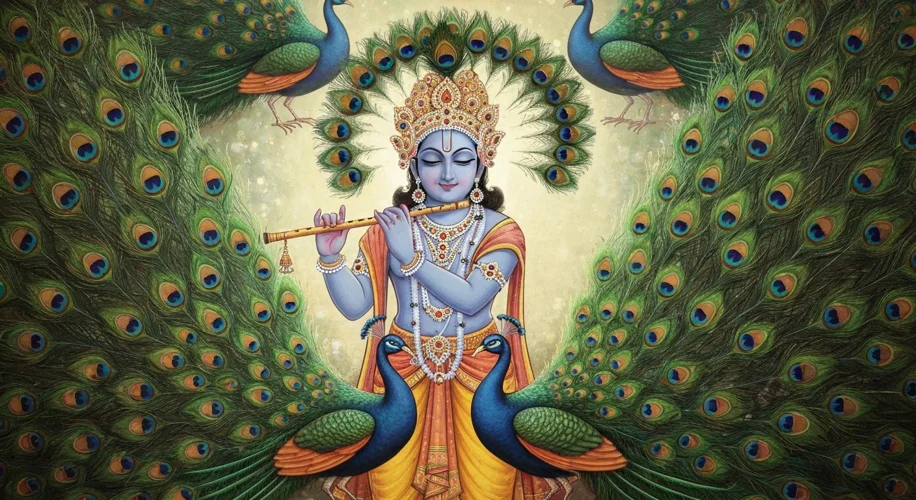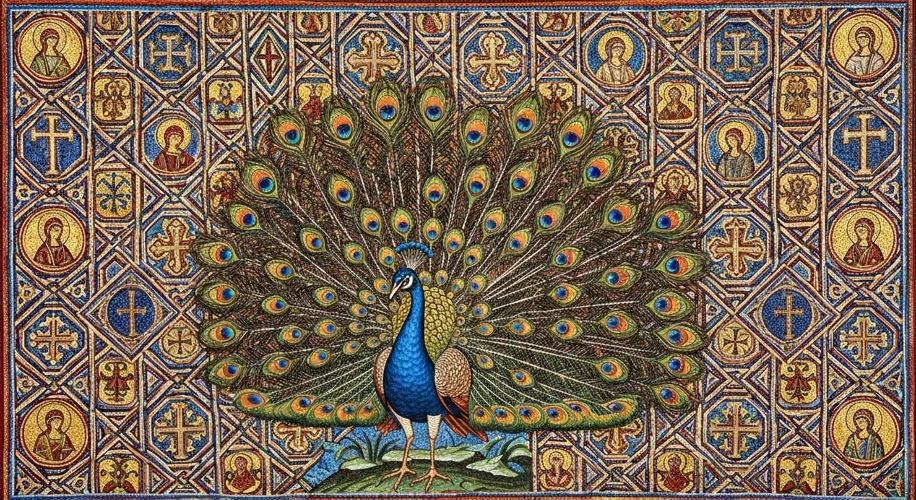Imagine a creature of such breathtaking beauty that it was once believed to have been guarded by the sun itself. A bird whose iridescent train, a cascade of emerald and sapphire eyes, could mesmerize any observer. This is the peacock, a native of the Indian subcontinent, yet its story is not confined to the lush jungles of its birth. For millennia, this avian marvel has embarked on a remarkable journey across Eurasia, weaving itself into the very fabric of art, religion, and royalty.
The peacock’s tale begins not with a thunderous roar, but with a quiet yet profound reverence. In ancient India, particularly within the Vedic traditions, the peacock was more than just a bird; it was a celestial messenger, a symbol of immortality, and the mount of powerful deities. Lord Krishna, with his flute and peacock feather crown, embodied divine grace and earthly joy. Kartikeya, the god of war, rode a peacock, its vibrant plumage a metaphor for his formidable power. The bird’s supposed ability to consume poisonous snakes without harm also lent it an aura of protection and spiritual purity. This deep-seated symbolism, born from the subcontinent’s rich spiritual landscape, would become the seed from which its Eurasian influence would sprout.

The Silk Road, that ancient network of trade routes, became the great conduit for this magnificent bird’s passage. As merchants, scholars, and pilgrims traversed the vast expanse from East to West, they carried with them not only silks and spices but also ideas, religions, and cultural treasures. The peacock, with its undeniable allure, was among these precious imports. By the 4th century BCE, Alexander the Great, upon his conquests in India, was so captivated by the bird that he reportedly decreed it a capital offense to kill one. His soldiers, returning to the Hellenistic world, brought tales and, undoubtedly, live specimens, introducing the peacock to the Mediterranean basin.
In the Greco-Roman world, the peacock began to acquire new layers of meaning. It became associated with Hera (Juno in Roman mythology), the queen of the gods, her regal status mirrored in the bird’s ostentatious display. The ‘eyes’ on its train were said to represent the all-seeing eyes of the goddess, a symbol of her omnipresence and vigilance. This association with divinity and royalty cemented the peacock’s elite status. It graced the gardens of the wealthy and adorned the banquets of emperors, a living testament to their power and sophistication.
As Christianity spread through the Roman Empire and beyond, the peacock found a new, potent symbolism. Early Christians adopted the bird as a representation of Christ and the resurrection. The flesh of the peacock was believed to be incorruptible, a divine quality that linked it to the eternal life promised through faith. The ‘eyes’ on its tail were reinterpreted as the watchful eyes of God, or the souls of the faithful gazing towards heaven. This Christian iconography proved remarkably resilient, appearing in mosaics, frescoes, and illuminated manuscripts across Europe for centuries.

The story continues eastward. In Persia, the peacock was revered as a symbol of royalty and eternity, often depicted in miniature paintings and architectural embellishments. The Sasanian Empire, in particular, embraced the peacock, with its kings often depicted wearing crowns adorned with peacock feathers. The bird’s association with the sun god, Mithra, further enhanced its divine and regal connotations. The image of the peacock as the ‘king of birds’ resonated deeply within Persian courtly culture.
Even in the Islamic world, though often absent from direct religious symbolism, the peacock retained its status as an emblem of beauty, paradise, and earthly power. It appeared in the decorative arts, particularly in Mughal India, where its image was intricately woven into textiles, inlaid into palaces, and immortalized in the legendary Peacock Throne, a symbol of unparalleled imperial splendor.

Why did this specific bird, originating from a relatively contained geographical region, achieve such widespread adoration and symbolic weight across such diverse cultures? The answer lies in a potent combination of its striking visual characteristics and the adaptability of its symbolism. The peacock’s flamboyant display is, quite literally, hard to ignore. Its iridescent plumage and the mesmerizing ‘eyes’ of its tail offer a rich canvas for human interpretation. Whether it represented divine power, eternal life, royal authority, or simple, unadulterated beauty, the peacock provided a potent visual language that transcended linguistic and cultural barriers.
The peacock’s Eurasian reign is a testament to the power of symbols and the enduring human fascination with beauty and the divine. From the sacred groves of ancient India to the imperial courts of Persia, the mosaics of Byzantium, and the palaces of Mughal India, this magnificent bird has flown through history, leaving an indelible mark on our collective imagination. Its journey is a vibrant reminder that even the most exotic of creatures can become universal icons, their stories woven into the grand tapestry of human civilization.

